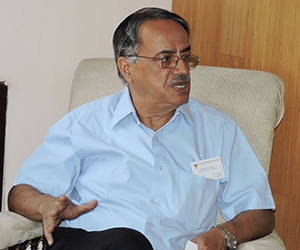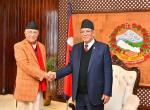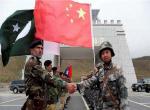Indian Prime Minister’s visit to Myanmar after a gap of 25 years was recognition of the fact that the positive changes occurring on Myanmar’s political firmament had created conditions for enabling such a high level visit.
Though India had been engaging Myanmar earlier also for strategic and security reasons, raising the level of political exchanges highlights the fact that the Indo-Myanmar relations have reached a turning point and are poised for an exponential expansion. A dozen Memoranda of Understanding signed after the visit also indicate the diverse fields in which India is engaging Myanmar.
Politically, reestablishment of formal relations with Aung Suu Kyi can be seen as one of the major gains of the visit. While she had close linkages with India in the past including active support by the Indian government to the democracy movement in the 1980’s, there was a break in this relationship due to geopolitics of the region. Though there were informal linkages and India had been pressing both sides, the military junta of the past and Suu Kyi led NLD to reconcile their differences, Suu Kyi had maintained a public distance from New Delhi. She was no doubt encouraged by support that she got from the West including public statements at the highest level, for instance from President Obama who in the Indian parliament had called for support to democratic forces in Myanmar. However, finally it was India’s proposal for reconciliation that possibly led to political rapprochement and transition which is now reasonably well established. This was confirmed during the Prime Minister’s visit and his joint statement with Aung Suu Kyi. The common platform was a strong message to India’s past detractors and this could be seen as the biggest political gain for New Delhi.
Myanmar’s strategic salience as a land bridge to China on the one hand and to the South East Asia on the other hand can not be over emphasised. While approaches from China through Myanmar are important from military, security and economic point of view the connectivity to South East Asia is relevant from the economic point of view. Security and stability in the border areas is an imperative for overall development and establishment of multi-modal corridors linking India and Myanmar and beyond. Both Indian and Myanmar leaders have assured each other that territories of either country would not be allowed to be used for activities inimical to the other, including for training, sanctuary and other operations by terrorist and insurgent organisations and their operatives. This is relevant because recently a ceasefire agreement has been signed between NSCN (K) between the local government of Sangaing division of Myanmar which had been viewed negatively in Indian strategic circles. However, Indian PM gave a positive interpretation to the agreement saying that it would be useful for ushering in peace.
India has also sought to support border regions by providing monetary assistance and open border haats (markets for trade) to develop the area. Evidently, where Indian officialdom needs to pay attention is in implementation of the decisions taken on some of the projects and schemes. The record so far in respect of execution of projects has not been very satisfactory.
Strengthening of relations with the Myanmar military particularly in the field of training is another gain in this field though this was not as much reflected in the joint statements.
Major gains were also made on trade and economic front. India is developing major interests in energy, minerals, and iron ore in particular as well as hydro power sector of Myanmar. The target of bilateral trade to $3 billion, by 2015 is modest and achievable. India’s offer of soft loan of $500m could be a driver towards expansion of bilateral trade. Trade and economy related MOUs will add to impetus in this direction and include, Memorandum of Understanding regarding US$ 500 million Line of Credit, Air Services Agreement between India and Myanmar and Memorandum of Understanding on Establishment of Joint Trade and Investment Forum.
The visit will provide impetus to the Look East Policy. It needs to be noted that the year 2012 is being commemorated as two decades of India’s Look East Policy and comprehensive engagement with Myanmar would impart impetus to the realization of such a policy. Further Myanmar is scheduled to take over as the Chairman of ASEAN in 2014 and both leaders reached an understanding to coordinate and cooperate in making the forthcoming ASEAN-India Commemorative Summit successful.
Some of the initiatives in relation to major vectors of Look East policy are as follows:-
(a) Communication Linkages. Agreement to expand road linkages from India to Myanmar and Thailand by 2016 would improve connectivity to South East Asia exponentially. India is also implementing Kaladan multimodal transport project that involves upgrading the Sittwe port and constructing a highway to connect the town of Paletwa in Chin state to the Indian border in Mizoram state by 2015.
(b) Support to Regional Role. Support to Myanmar’s role in ASEAN, Bay of Bengal Initiative for Multi-Sectoral Technical Cooperation (BIMSTEC) and the Mekong Ganga Cooperation (MGC) has been affirmed. Myanmar is the current chairman of BIMSTEC and can play a very useful role in furthering the objectives of this grouping.
(c) Diverse Engagement. India is expanding engagement in diverse sectors, including science & technology, tourism, transport & infrastructure, information communication technology, agriculture and energy.
(d) Tourism. Opening up air service to Myanmar and road linkages would not only promote tourism but would also intensify people-to- people exchanges.
(e) Education. The number of training slots for Myanmar under technical assistance programme has been increased from 250 to 500 every year. An agreement on the setting up of the Myanmar Institute of Information Technology will boost capacity in the ICT sector in Myanmar.
Chinese official reaction to Indian PM’s visit was on expected lines as the Foreign Ministry spokesman Liu Weimin told a press briefing that China welcomes the engagement. "Both India and Myanmar are China's friendly neighbours. China is happy to see the development relations between them. We hope such development of friendly relations is conducive to the stability and prosperity of the whole region". However Chinese media has been less considerate and has clearly stated that India is making up for lost time after it finds itself left out by Chinese and Western initiatives in Myanmar. The truth may however be somewhere in between.
China’s overall policy on Myanmar is likely to remain unaffected by these developments i.e, both Indian and Western entry to Myanmar. China’s deep political linkages with Myanmar would be evident by Beijing recently hosting a delegation from Myanmar’s largest political party the Union Solidarity and Development Party (USDP) comprising of military junta loyalists which had an audience with Vice President Xi Jinping.
While there was a setback seen with suspension of work on the Myitsone dam, indications are that this is likely to be limited and some say that on the ground work is continuing. Thus China’s policy of trade routes and transportation corridors to the Indian Ocean through Myanmar is unlikely to be impacted.
India has been one of the last few major states to engage with the new regime in Myanmar including the emerging political order where Aung Suu Kyi despite her official status as only a MP has a major role to play in the future. However India could be said to have made up for this lost time by establishing multi dimensional engagement covering all essential facets during the visit of Dr Man Mohan Singh. It is only effective implementation of the MOUs which have been reached with Myanmar that need to be monitored and executed.
Published Date: 8th June 2012










Post new comment